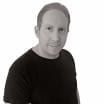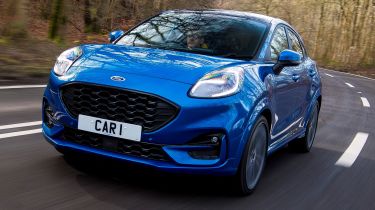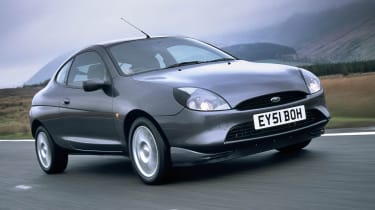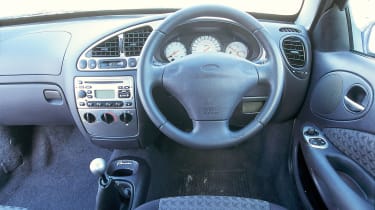Ford Puma: old vs new
Ford surprised fans by using the 'Puma' name for its new SUV - we see how it compares with the original coupe
What would you do if you were given the Ford Fiesta as a starting point and told to design a car that's fun, fresh and guaranteed to be a hit? In the mid-1990s, Ford's engineers faced this very challenge and the result was the two-door Puma coupe, a rival to fun, affordable cars like the Vauxhall Tigra.
Just over two decades later, the Ford Puma is back, but this time the design is very different. Small coupes aren’t as popular as they used to be, whereas small crossovers are all the rage, so the Puma is a five-door, high-riding model to rival the Nissan Juke et al. This certainly makes it better suited to families, but should purists and fans of the original Puma weep? Maybe not; Ford's engineering know-how means there is still some fun to be had in the new model.
Design
Launched in 1997, the Ford Puma was marketed with a legendary TV advert. It used a then-cutting-edge technique to place Steve McQueen behind the wheel, driving the car in San Francisco in the style of the movie Bullitt. It might not have had the muscle of a Ford Mustang, but the Puma's 'New Edge' design was sophisticated and desirable. Based on the Mk4 Fiesta, the Puma was also small enough to be affordable, ideal for nipping into tight city streets and easy to park.
On the surface, the latest Puma looks very different, but squint your eyes slightly and it's possible to spot the original car's high-set headlights and pert rear haunches. Of course, as it’s a small SUV, the new model is much bigger and taller. This has transformed it into a more practical car and one that represents an upgrade on the size of a Fiesta, rather than simply a more sporty take on one, like the original Puma. Like most crossovers, it features pumped up wheelarches, tall doors and a large front grille, along with alloy wheels that tower over the 15-inch wheels of the old car.
Interior
While it hasn't aged too badly from the outside (if you can find a rust-free and cherished example), sitting in the Puma coupe certainly feels like travelling back to the 1990s. The white analogue gauges with red needles hint at its sporting intent, and the round, aluminium gear knob is a delight to hold, but the rest is decidedly old hat. That goes for the steering wheel with its oversized hub (airbag technology has come a long way since the mid ‘90s) and the CD player/radio with tic-tac buttons, few features and tinny sounding speakers. Shiny silver and grey plastic is joined by patterned cloth seats.
The Puma SUV's interior has been mostly transplanted from the current Fiesta, following in the footsteps of the old model, and that's no bad thing. It has a slim, mostly horizontal fascia, with minimal controls and a tablet-style display perched on top. This boasts Ford's SYNC 3 software, which is decidedly futuristic next to the old car's stereo. Navigation is built in, along with Apple CarPlay and Android Auto smartphone compatibility, so you can make calls and use voice commands like "go to the nearest petrol station".
Economy and performance
The old Puma may miss out on all the tech in the new one, but its basic technology and smaller size mean it only weighs a tonne. The result is that even the modest 1.4-litre petrol with 88bhp can get it from 0-60mph in a respectable 10.8 seconds. This drops to 10.1 and 9.2 seconds for the 1.6 and 1.7-litre versions with 102 and 123bhp respectively. Unsurprisingly, the most potent engine is the one to go for, not just because it's fastest, but also because it's sweet, free-revving and best suits the Puma's character. It was the Puma's handling that set it apart, though, impressing drivers who were familiar with more expensive machinery. The car’s direct steering and lightning fast responses made it really entertaining to drive.
Economy figures from the time of the original Puma put its fuel economy at just below 40mpg but different testing methods mean these can't really be compared with the new car. Luckily, old Pumas are now so cheap to buy that there should be some money left over for fuel. Road tax costs £165 a year for the 1.4-litre, while the 1.6 and 1.7-litre sit in the higher £270 band for cars registered before the start of March 2001.
Top of the tree was the Ford Racing Puma, which had a 153bhp version of the same 1.7-litre engine and a sub-eight second 0-62mph time. These are even rarer, though, as only 500 were made, all with wider bodywork painted in the gorgeous Ford Racing Blue. While a standard Ford Puma can be bought for less than the cost of a new mattress (although perhaps not for much longer), the Racing version is infinitely more collectable - expect to pay at least £10,000 for one.
Despite years of progress, the heavier Puma SUV isn't all that much faster than the old car. Its 1.0-litre EcoBoost turbo petrol engines have 124 and 153bhp respectively, getting it from 0-62mph in 9.8 or 8.9 seconds. Of course, once up to speed, the modern engines are likely to give the new car the edge for 'rolling acceleration' and overtaking.
A Puma ST performance model is also available, with a 1.5-litre petrol producing around 197bhp. Closely based on the Ford Fiesta ST, it is the one to pick if you want a hot hatch with space for a family; it drives almost as well as the Fiesta but there’s much more room inside. It might be a crossover, but Ford's engineers still lead the pack when it comes to chassis tuning, and the Puma is surprisingly good fun. You're not quite as in touch with the road as you are in the Mk1, but there's very little body lean and impressive grip.
Fuel-efficiency for the modern Puma ranges from 52.3mpg to 51.4mpg, according to the latest WLTP testing, which should be easier to replicate in real-world driving. Both versions also have low CO2 emissions, helping them appeal to business drivers. The ST officially manages 40mpg but use the full performance and 25mpg is more realistic.
Practicality
Practicality wasn’t a top priority for Ford in designing the Mk1 Puma; it's almost a two-seater by modern standards. There is a back seat, of course, accessed by folding forward the front seats and squeezing yourself inside. But, rather like a Porsche 911, there's only really enough space for short trips in a pinch, or kids and shopping bags. The biggest issue for most adults is the plunging roofline, which will have you leaning your head sideways. The boot is reasonable at 240 litres, and you can flip forward the back seats to create a larger space.
The new Puma is in a different league in the practicality department, as you might expect given the two cars’ different bodystyles. There's an extra set of doors for a start, and back seat passengers will find they've got almost as much space as those in the front. The Puma is 54mm taller, 71mm wider and has a 95mm longer wheelbase than even the current Fiesta, which itself is considerably bigger than the old Puma. Boot space measures 456 litres, with an extra 90-litre cubby under an adjustable floor, and some versions feature a powered tailgate you can open by waving your foot under the bumper.
Safety
While modern classics like the original Puma are certainly fun for local drives and have their place on the road, we wouldn't necessarily recommend them for long-distance travel, or for families. That's simply because safety standards have changed beyond all recognition; it's probably the biggest area of difference between the two Pumas.
The independent crash-test body Euro NCAP, which we now look to for comparative safety ratings for all popular models, only formed in 1997 - the same year the Puma was released. While the Puma wasn't tested, the Fiesta could only manage three out of five stars, and the standards were orders of magnitude lower than today's. It features a driver's airbag and anti-lock braking.
The Mk2 Puma is incredibly strong in an impact, shielding its occupants and dissipating the energy through carefully designed crumple zones. It was tested to Euro NCAP's tough new standards in 2019, getting five stars overall and 94% for adult occupant protection. Top versions are fitted with 12 ultrasonic sensors, three radars and two cameras to monitor its surroundings and allow it to brake autonomously should the driver fail to react in time. It's also equipped with lane keeping assist, myriad airbags and software to stop the Puma skidding.
Verdict
Despite the vast gulf in design, size and technology between the two Puma models, which has no doubt left some enthusiasts feeling peeved about the use of the name for the new car, it's still possible to see a connection between the two.
The new Ford Puma has arresting looks, a sense of fun, punchy engines and sharp handling. It's also much safer and provides enough room for back seat passengers, with no apologies for scraped heads required. In terms of sheer driving pleasure, however, the lighter, smaller and more involving Puma is the clear winner.
Read our in-depth review of the latest Ford Puma and its rivals, including the Nissan Juke, Renault Captur and Peugeot 2008.
Recommended
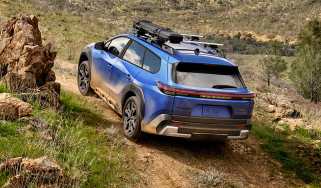
New Subaru Trailseeker revealed as rugged electric SUV with 375bhp
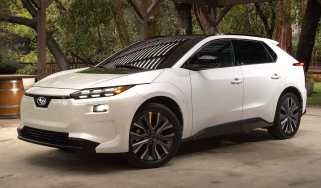
New Subaru Solterra brings more range, power and polish
Most Popular
Tips & advice

Car dashboard warning lights: what does each symbol mean?

Electric car charging stations: public networks, charger types, apps and maps

